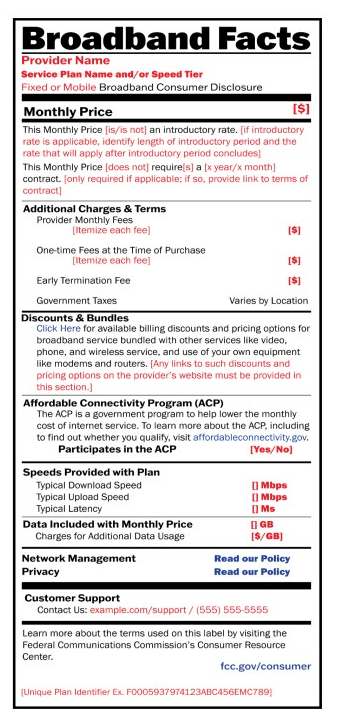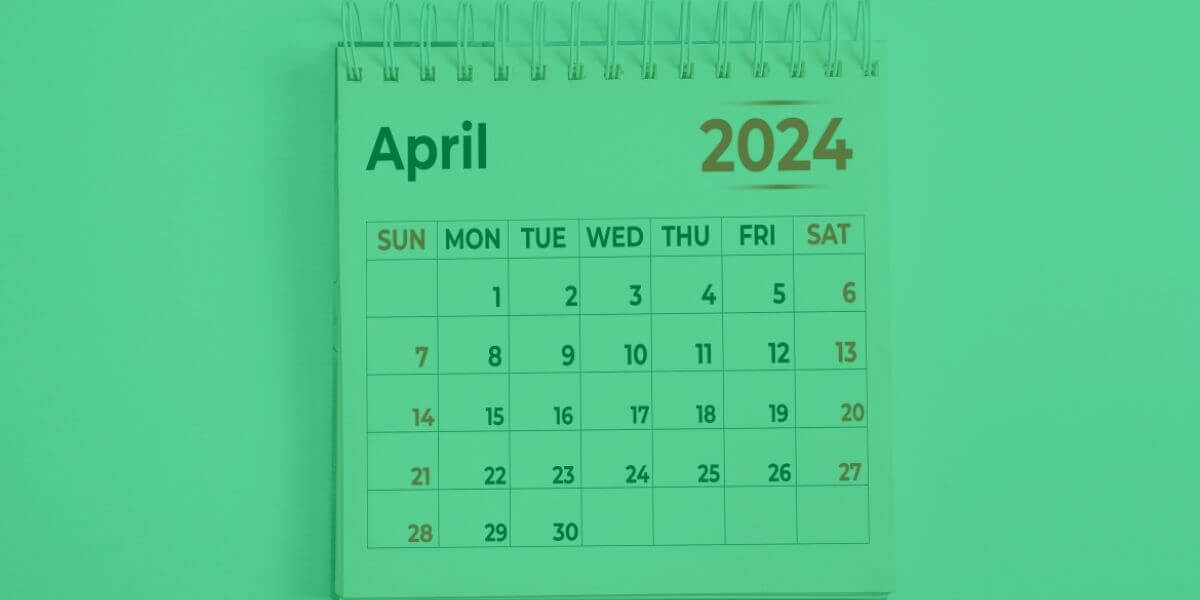Lower your internet bill
61% of people overpay for their internet.
Are you one of them?
Unlock exclusive offers in your area!
Call now
[tel]Enter zip code
1 Star is Poor & 5 Stars is Excellent.
* Required

Written by Rosslyn Elliott - Pub. Mar 07, 2024 / Updated Mar 08, 2024
Table of Contents
Are you happy with your Internet service?

About the author
Shopping for internet service can be confusing even when you’re tech-savvy.
Ever had a hard time figuring out exactly what an internet service provider (ISP) was offering?
You may have found it tough to locate details even for basic plan features like speeds and equipment fees.
All that is about to change. The Federal Communications Commission (FCC) recently made a new rule that broadband providers have to use simple labels that show the key details of their services [1].
These labels are designed to help you compare your options and choose the best one for your broadband needs. Read on to learn more about how broadband consumer labels will help you.
A broadband consumer label is a handy guide that tells you the key features and costs of a broadband service plan.
This label works like the nutrition labels that you find on food products. It even looks a lot like a nutrition label. But instead of calories and ingredients, the label tells you the internet speed, data usage, price, and other details of the broadband service.
Because the broadband consumer label is digital, it can include links. This allows you to get even more information than can be included on the template.
The FCC has made a sample for the broadband consumer label:

As you can see, the label shows you lots of valuable information about the internet plan.

Clarity for consumers
The FCC’s rule requires broadband providers to use the broadband consumer label template (or a similar format) to show the information described above.
The providers must make the labels easy to see on their websites or at their points of sale. The providers must also update the labels when there are changes in the terms and conditions of their services.
The rule applies to all kinds of broadband services, including fixed (such as cable, DSL, or fiber) and mobile (such as cellular or satellite) services.
The rule does not change the actual speeds, prices, or policies of broadband services. It only says that the providers must show them accurately and clearly to consumers.
The FCC asks consumers to use the labels to compare different broadband options and to report any problems or complaints to the FCC or other related authorities.

Choose the best ISP
The FCC’s rule is a big step towards making broadband better and fairer in the US. The FCC says that the main point of the broadband consumer labels is to give consumers the power to choose the best broadband for them. The FCC wants the labels to help consumers:
The FCC’s Chairwoman, Jessica Rosenworcel, stated that consumers will now be equipped to “make informed choices about which high-speed internet plan is the best fit for their needs and budget” [2].
The broadband consumer labels are a new and helpful tool for consumers who are looking for a new broadband service or who want to check their current broadband service.

Save money
Don’t think that the labels are all you need to know before choosing a broadband service. The labels might not tell you everything or anything that matters to you, such as customer care, dependability, coverage, or safety.
The labels might also not reflect the real speed or quality of your broadband service, which might vary depending on things that your provider has no say over, such as your location, device, or network conditions.
So, you can always double-check some of this information here at CompareInternet.com by using tools like our speed test. Our resource library and expert staff reviews can give you all the clarity you need.
The broadband consumer labels are a positive move toward holding the broadband providers more accountable and honest.
Labels will give you and other broadband users more rights and power. But they are not a magic wand that will solve all the problems or challenges that you face in the broadband market.
As a consumer, you should always be cautious and informed about your broadband options. Use the resources and tools that are here on our site to make the best choice for your broadband needs.
There are two phases for the roll-out of the FCC’s internet consumer labeling plan [3].
Small internet providers (under 100K subscribers) don’t have to use the broadband consumer labels until October 10, 2024.
Large internet providers (over 100K subscribers) must act much sooner. Their labels will need to be in place by April 10, 2024.
Enter your zip code for a list of providers and plans in your area.

Rollout April 2024
A broadband consumer label is a simple way for internet service providers to show you the main features and costs of their internet plans.
A broadband consumer label shows you plan details like how much you’ll pay each month, how much data you can use, how fast your internet will be, and how well the network performs.
See our internet speed guide for a complete overview of how your speed will affect your internet activities.
You can use broadband consumer labels to see how different plans from different providers stack up against each other. You can also check if the plan matches your internet needs, like online gaming, or working remotely.
If you see something wrong or fishy in the broadband consumer label of your plan, you should reach out to your provider and ask them to explain or fix it. If you’re not happy with their answer, you can file a complaint with the FCC online, by phone, or by mail [4].
Yes, broadband consumer labels can be a part of your search for the best internet provider. Use them along with our resources about cheap internet deals and how to find a good provider. Or enter your zip code now to see providers in your area!

Know your true internet speed
[1] LightReading.com. “FCC Requires Most Broadband Labels by April 2024."
[2] FCC.gov. “FCC Announces Broadband Labels."
[3] LightReading.com. “FCC Requires Most Broadband Labels by April 2024."

About the author
Congratulations, you qualify for deals on internet plans.
Speak with our specialists to access all local discounts and limited time offers in your area.
[tel]61% of people overpay for their internet.
Are you one of them?
Unlock exclusive offers in your area!
Call now
[tel]Enter zip code